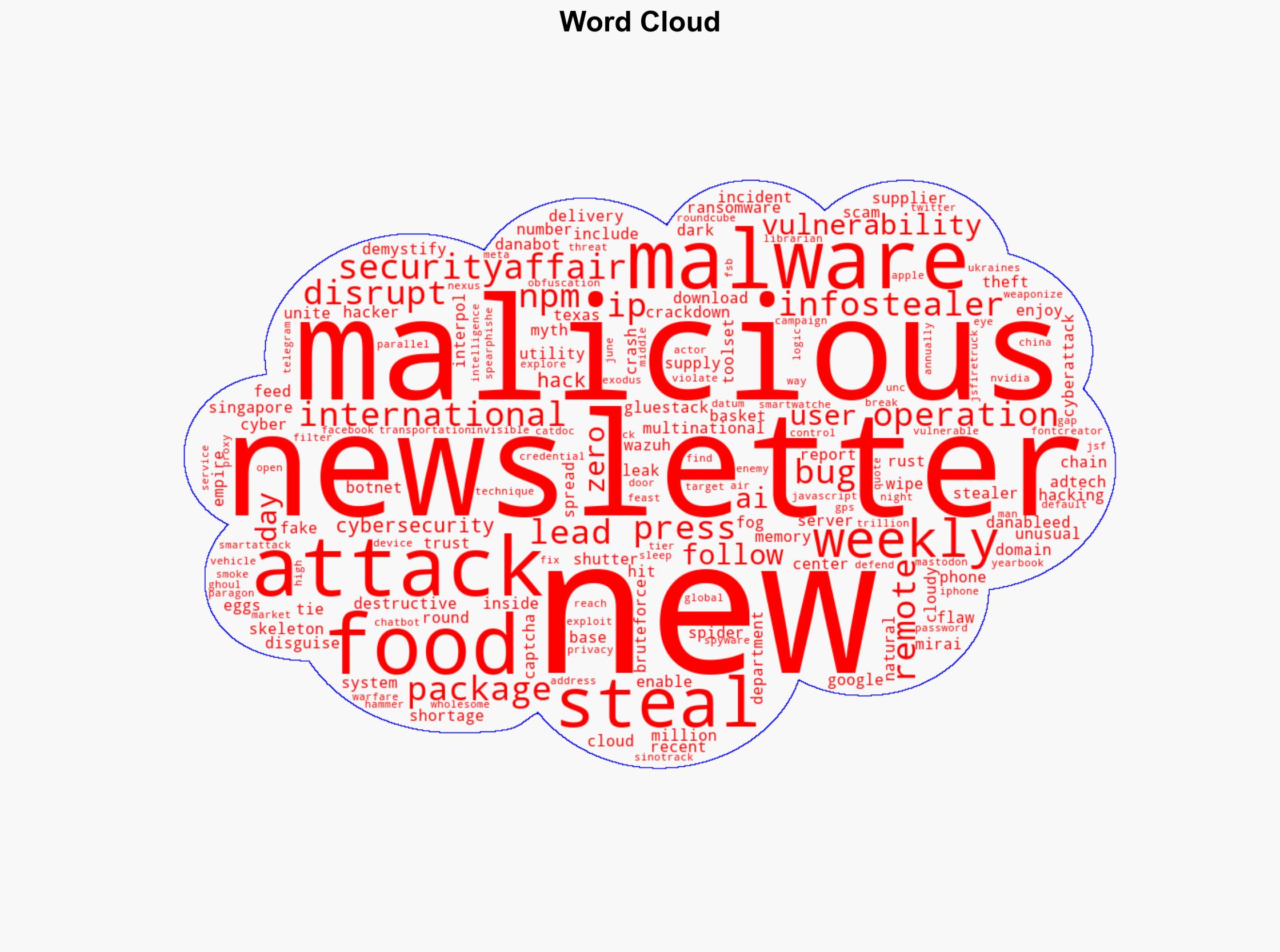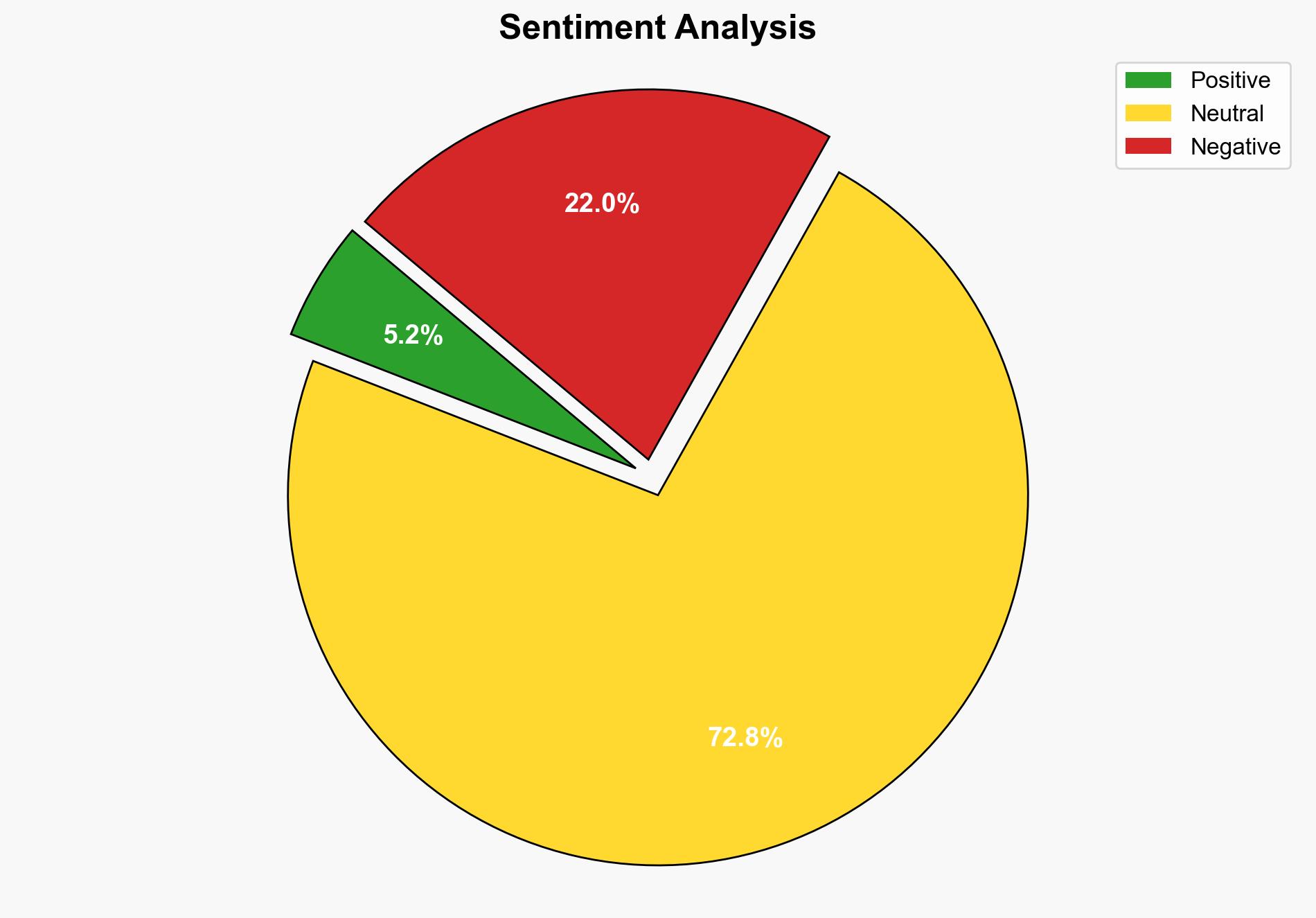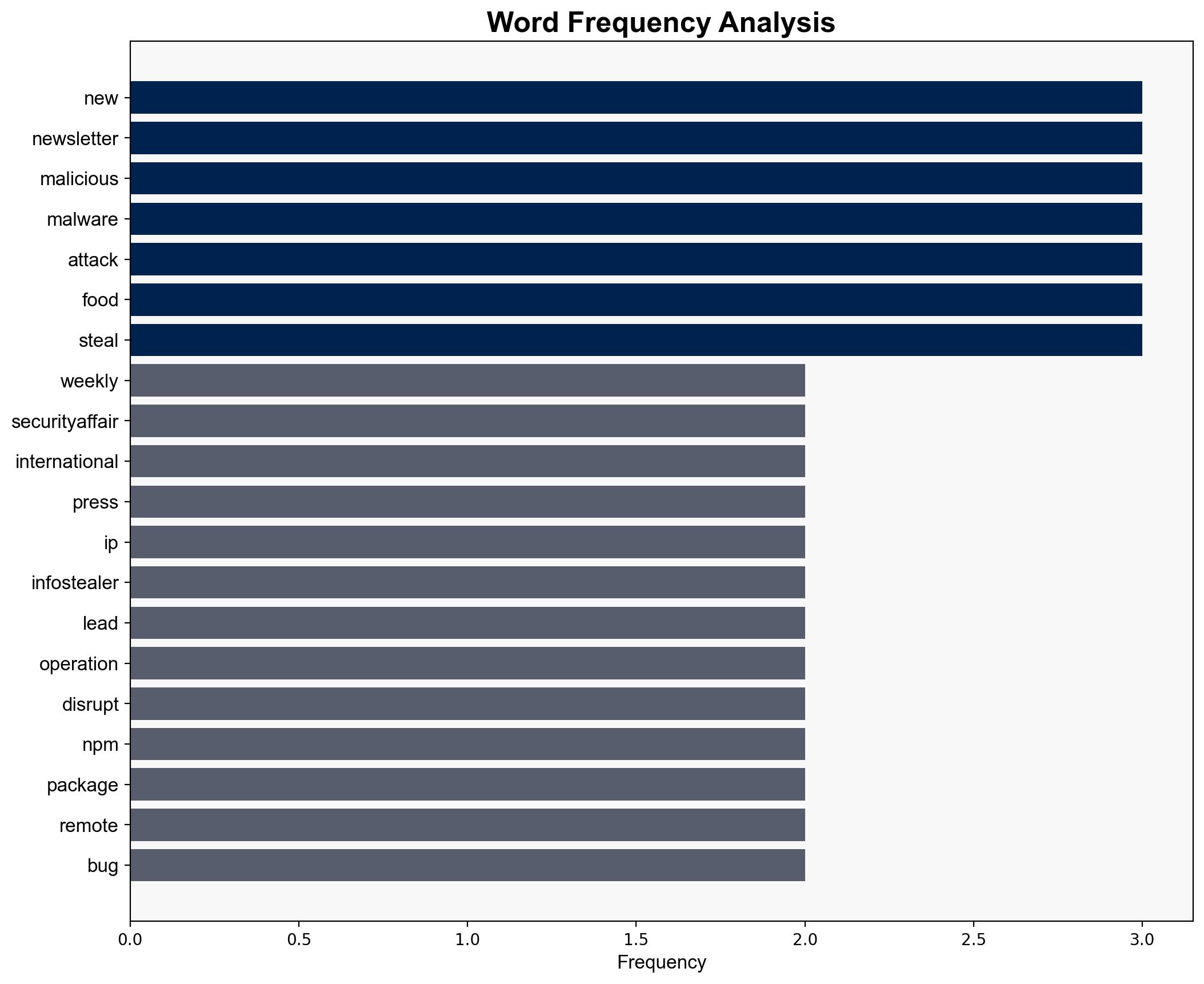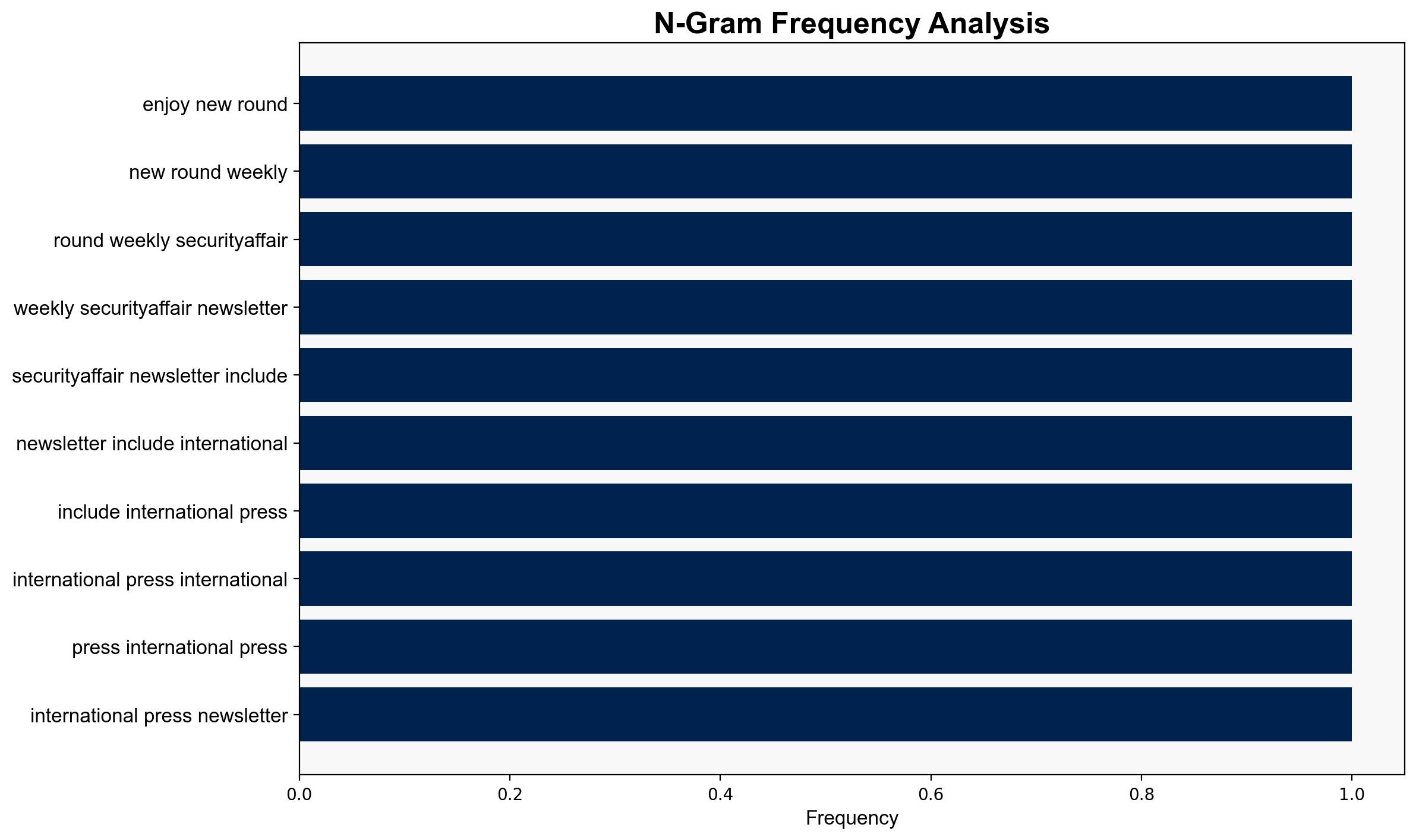Security Affairs newsletter Round 528 by Pierluigi Paganini INTERNATIONAL EDITION – Securityaffairs.com
Published on: 2025-06-15
Intelligence Report: Security Affairs newsletter Round 528 by Pierluigi Paganini INTERNATIONAL EDITION – Securityaffairs.com
1. BLUF (Bottom Line Up Front)
The latest Security Affairs newsletter highlights significant cybersecurity threats, including ransomware, supply chain attacks, and vulnerabilities in widely-used software and devices. Key findings suggest an increase in sophisticated cyber operations targeting critical infrastructure and supply chains, posing risks to economic stability and national security. Immediate action is recommended to bolster defenses and enhance incident response capabilities.
2. Detailed Analysis
The following structured analytic techniques have been applied to ensure methodological consistency:
Adversarial Threat Simulation
Recent cyber incidents, such as the ransomware attack on United Natural Foods, demonstrate adversaries’ capability to disrupt supply chains. Simulating these attacks can help identify vulnerabilities in logistics and operational technology systems.
Indicators Development
Monitoring for unusual toolsets and malicious IPs, as seen in the crackdown on infostealers and the use of fake CAPTCHA malware, is crucial for early detection and prevention of cyber threats.
Bayesian Scenario Modeling
Probabilistic models indicate a high likelihood of increased attacks on software supply chains, as evidenced by the npm package attack on Gluestack, necessitating enhanced scrutiny of third-party dependencies.
3. Implications and Strategic Risks
The convergence of cyber threats with geopolitical tensions, such as those involving China-nexus threat actors, underscores the potential for cyber operations to serve as tools of statecraft. The systemic risk to global supply chains and critical infrastructure could lead to economic disruptions and heightened geopolitical instability.
4. Recommendations and Outlook
- Enhance supply chain security by implementing rigorous vetting processes for third-party software and continuous monitoring of dependencies.
- Strengthen public-private partnerships to improve information sharing and collective defense mechanisms against cyber threats.
- Scenario-based projections suggest that, in the best case, increased collaboration and proactive measures could mitigate risks, while the worst case could see widespread disruptions if current vulnerabilities remain unaddressed.
5. Key Individuals and Entities
Pierluigi Paganini
6. Thematic Tags
national security threats, cybersecurity, counter-terrorism, regional focus




